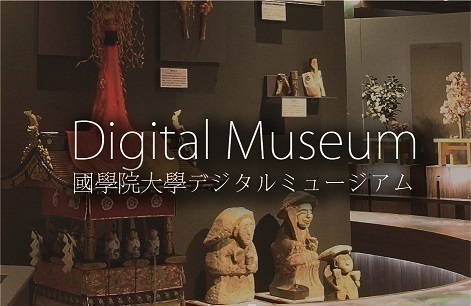- トップ
- Encyclopedia of Shinto
- Watanabe Ikarimaru
Encyclopedia of Shinto
| Main Menu: | |
| Links: |
詳細表示 (Complete Article)
| カテゴリー1: | 8. Schools, Groups, and Personalities |
|---|---|
| カテゴリー2: | Personalities |
| Title | Watanabe Ikarimaru |
| Text | (1836-1915) A Shinto priest (shinkan) and scholar of National Studies (kokugaku) active from the end of the Tokugawa regime through the Meiji era. His formal name was initially named Shigetō, but later changed to Ikarimaru. His common names included Yokichirō and Tetsujirō, and his epistolary names included Toyoki, Ōseien'inshi, Monshitsuanshujin, and Tetsujūji. The second son of Watanabe Shigekage, Ikarimaru was born in 1836 in Buzen Nakatsu Sakuramachi (modern-day Nakatsu, Ōita Prefecture). His father was a retainer for the Okudaira family of the Nakatsu Domain and Shinto priest (shinshoku) at the shrine Fukidehama Kohyō Jinja. Watanabe's grandfather Shigena was a disciple of Arakida Hisaoyu and Motoori Norinaga, and introduced kokugaku to the Buzen-Bungo area. His older brother Shigeharu (1831-90) pursued his studies at Ise under the direction of Ajiro Hironori and Mikannagi Kiyonao. At the age of eight, Watanabe attended the private school Seikyūdō run by Tejima Jintarō, who was also the teacher at the domainal academy Shinshūkan. Later, in 1853 he studied at the Hakugan academy run by the domain's Confucian scholar, Nomoto Hakugan. Inspired by Fujita Tōko's Hitachi obi, Watanabe began sword training under the domainal fencing master during the Ansei era (1854-60). In 1860, influenced by his brother Shigeharu, he read the Watanabe's house copy of Hirata Atsutane's Tama no mihashira, and thereafter changing his name to Ikarimaru. In 1862, after reading Aizawa Yasushi's Shinron, he sought admission to Aizawa's school, and while not successful, his scholarly theories combining kokugaku and Mito Studies (mitogaku) were formalized, and in the first year of 1864 he established his own private academy Dōseikan. In 1867, Watanabe became a pupil at the Hirata school; the following year he went to the capital and met Hirata Kanetane, and with Kanetane's recommendation, he became a Special Consultant (goyō gakari) at the School of Imperial Studies (Kōgakusho) in 1868. Soon after, however, both the School of Imperial Studies and the Kyoto Daigakkō were abolished. At one point Watanabe worked as the head teacher of the Hirata school, but in 1872 he moved to Tokyo upon his appointment to work at the Ministry of Religious Education (Kyōbushō) as an clerk in historical surveys. The following year, he was appointed as lecturer of Imperial Studies (kōgaku) at the Institute for the Great Teaching (Taikyōin; see taikyō senpu) and consecutively served in offices related to the Shinto religious administration (jingi gyōsei). He resigned his position, however, when his students at Dōseikan joined the Satsuma army during the Satsuma Rebellion (1877). In 1882, he relocated his academy Dōseikan to Tokyo and devoted himself to writing and educational activities outside of government service. He died in 1915 at the age of seventy-nine. Watanabe's representative writings include Bengaku shōgen, Shinten'ōkyō setsuryaku (Outline of the True Teaching of the Heaven King), Amenominakanushi no kami kō, (Observations on Amenominakanushi no kami), Kohon saku (Policy for Firming the Base), Kōtōka (Songs for the Imperial lineage), and the Shūshinrei yōkō (Essentials of Personal Cultivation). —Mori Mizue |




